- Combination of 6.2-liter V8 and an electric motor makes 655 horsepower.
- All-wheel drive adds incredible traction for track-day antics
- Features the Z06's wider body and carbon-ceramic brakes.
Corvette E-Ray Hybrid First Drive: Docile on the Road, Terrific on the Track
All gain, no pain
Having a midlife crisis at 66 is a bit late for a radical change. But in 2019, when Chevrolet announced the Corvette was going mid-engined, that's exactly what it looked like. Finally free of its traditional and constraining front-engine, rear-drive layout, the Corvette got a wild new look and a comprehensive engineering overhaul to bring it more in line with its European competition. If the Corvette was a man, it would have hit the gym, picked up a new wardrobe from Lululemon, dyed his hair and dropped a few grand at a tattoo parlor.
Now, at 70, the Corvette looks to still be having a bit of a crisis. Not satisfied with its new mid-engine layout, it's decided that it wants to add all-wheel drive and be a part of the electrified scene too. The next thing you know, it's going to come with turbocharging. Grandpa, stop.
Of course it would be all too easy to assume the Chevrolet is simply patching the Corvette to keep up with its competition, but the fact is the E-Ray was part of the plan for the C8 platform since its inception. What the E-Ray offers, for the first time, is a Corvette with true all-weather capability while giving up nothing in performance.
What's not so different
Despite the radical changes to the powertrain, the rest of the E-Ray is still familiar as any C8 Corvette, albeit as a melange of the base Stingray and the Z06. Outside, the E-Ray adopts the wider body of the Z06 (3.6 inches wider than the Stingray) — allowing room for the mega Vette's wheel sizes of 275-section front tires and massive 345-section rears — but the E-Ray goes without the Z06's more aggressive aero bits. Without the E-Ray specific body-colored trim, it's pretty easy to mistake it for a standard Stingray.
Inside, the E-Ray is nearly identical to any other Corvette. The only real difference is the presence of a button controlling the charging strategy, which is located on the center tunnel by the driver's thigh. The E-Ray also offers a mix of features from both the Stingray and the Z06. MagneRide adaptive suspension and a head-up display (optional on the Stingray) are standard, as are the carbon-ceramic brakes from the Z06.
The E in E-Ray
Let's get right to it. In the back of this Corvette is the 6.2-liter V8 from the Stingray. On its own, the V8 revs to 6,500 rpm and cranks out 495 horsepower and 470 lb-ft of torque. It's mated to an eight-speed Tremec dual-automatic transmission and drives the rear wheels. Yada yada yada. Up front, as well as in the middle, is where everything changes.
Situated between the driver and passenger, and beneath the controversial ridgeline of buttonry, sits a 1.9-kWh lithium-ion battery pack. Connected to that battery is a single-speed electric motor that drives the front wheels. Housed in a magnesium case, that motor generates a maximum output of 160 horsepower and 125 lb-ft of torque. The E-Ray makes a combined 655 hosepower between the two sources.
While it seems redundant to say what's already been said, this makes the E-Ray the first Corvette to use electrification, as well as the first Vette to be all-wheel-drive. And front-wheel-drive. That's because, as small as the battery pack is, it can still deliver enough juice to the motor to propel the E-Ray to speeds up to 45 mph for short distances before the V8 kicks in and takes over. A front-wheel-drive Corvette. What a time to be alive.
Since the battery is so small, regeneration of electrical energy is handled through the braking system. And while you can deplete the battery to the point where it offers only minor electric boost, it will always maintain a minimal state of charge to power the motor. Of note, there is nothing but software connecting the electric motor to the 6.2-liter V8.
The tighter the road, the faster you'll go
Blending an electric motor with an internal combustion engine still catches out established manufacturers to this day, so I had some trepidation as to how the E-Ray's new drive system would work. Cliffs Notes: It's seamless.
There are a few instances where you will be aware of the electric motor, namely when you select either the Stealth or Shuttle mode (both of those allow for electric-only propulsion) or when you stomp on the gas, triggering a fairly standard-sounding synthesized EV noise along with a stronger level of electric boost. Otherwise, you'd be hard-pressed to tell that you're driving anything but a standard Stingray.
Accelerating normally away from a stop feels ordinary and is accompanied by the familiar low growl from the V8 just over your shoulder. But when you really stand on it, especially once you're already cruising, the electric motor starts to pay dividends. Providing an instantaneous hit of power, the electric motor fills in for the V8 should it not be in its powerband and helps the E-Ray feel that much more responsive and torquey than the standard Stingray. In fact, I'd say that it has better real-world responses than the mighty Z06 and its higher-strung engine.
Adding the weight of an electric motor and even the smallest battery pack could wreak havoc on a sports car's handling balance. And while the newfound tech does add a few hundred pounds to the Corvette's weight, changes in steering quickness, along with a slight shift in the E-Ray's overall weight balance toward the front, make the E-Ray feel a bit more stable and less darty than the Stingray. Of course the massive tires help to mask some of the extra weight too, but the E-Ray felt more relaxed on a twisty back road while losing, at spirited speeds, none of the chassis' impressive grip. While specially developed Michelin Pilot Sport all-season tires are standard on the E-Ray, our drive time was spent with the optional and more performance-oriented Pilot Sport 4S tires mounted up.
Pushing harder on a narrow two-lane road is a thrill in a Stingray but requires some patience as well as a steady hand to ensure that you keep the bodywork off the guardrails. Getting a bit greedy with the throttle can result in a bit of understeer or a touch of oversteer. But I had none of those trepidations in the E-Ray. Not only is there more rubber on the ground, but the electrified front axle begins pulling you out of the corner the moment you pick up the throttle, and before the rear wheels might be inclined to start spinning up. Traction is immense and the E-Ray drives every bit like the well-tuned all-wheel-drive sports car it is. The MagneRide system has been retuned but it still exhibits the impressive range of bump absorption and body control we've come to expect from the Corvette.
The only instance where drivers might feel the electric motor's presence is during regeneration. On several occasions, usually during light braking with a bit of steering angle, I noticed what felt like torque steer from the front end. The steering would tug ever so slightly in the direction you were turning, and while it was never enough to really change your trajectory, it was noticeable however brief.
But this is a Corvette, so it does need to have some real track-day chops. Luckily for me, my drive time included a few laps at Pikes Peak International Raceway.
Track days? OK!
Though not a traditional, fast and flowing road course, the race course incorporated into the track's oval circuit is a pretty good place to experience the benefits of that electric front axle. With only a handful of laps to get accustomed to things, I started out in the E-Ray's Charge+ energy deployment setting. It sounds pretty fancy, but what it does is attempt to maintain the battery's state of charge for any given driving situation. If you're on track, think of this as the mode you'd use for a 20-minute lapping session. You're not always going to get the maximum amount of energy but you will have more energy for longer.
The standard Stingray is already pretty fast, so you still hear the familiar sound of the 6.2-liter under hard acceleration. But you will definitely notice the extra boost, especially at lower and moderate speeds. Throttle response is immediate and traction exiting Pikes Peak's flat hairpins is very impressive. Where you'd likely hesitate in the Stingray, or at least not give it a boot full of throttle, you can simply step on the accelerator without thinking twice. The traction and acceleration generated by the electric motor all but eliminate any fear of the E-Ray trying to swap ends, and that confidence is doubled with riding up a curb or crossing over broken and patched pavement.
After a few getting-to-know-you laps, I had one more go-round to experience the E-Ray in its most aggressive battery setting, called Maximum Discharge. If the Charge+ setting is for a whole track session, Maximum Discharge is for a qualifying lap. Engaged, the E-Ray is that much more explosive out of corners. While it won't keep up with a Z06 down a longer straightaway, it would certainly match it on corner exit and likely hang with it under well into the triple digits. The electric motor will eventually disengage at speeds over 140 mph, but thanks to a trick speed-matching system, the moment your speed drops back below that threshold, the motor reengages and is ready for action.
The Corvette's Performance Traction Management system is just as excellent as it is on any other Corvette and only adds to the confidence of amateur drivers as you pile on the speed. The electric motor is not outside the influence of PTM and is instead fully integrated with the system. In short, it remains, arguably, one of the best such systems on the market.
Of course with such a short time on track it's difficult to extrapolate how well the E-Ray would fare over a full day of lapping, but we estimate a skilled driver could achieve about 80% what a Z06 could do with the same driver, and they'd be more confident while doing so. And if you really want to mess with a Z06 owner at a track day, feel free to buy the Michelin Sport Cup 2 R tires that are optional for the Z06. Remember the E-Ray wears the same-size wheels as that track weapon, so you can run the same tires.
Edmunds says
With seemingly little fanfare, the Corvette team has released the most interesting and most advanced version of its car, ever. Situated between the Stingray and the bonkers Z06, the E-Ray leans more toward the grand-touring side of things while adding to the standard Corvette's potent performance. Starting at $106,595 (including destination), the E-Ray isn't remotely inexpensive. But for buyers who want more than what the standard Stingray offers without wanting to go all the way into the more extreme Z06, the E-Ray is an excellent option.
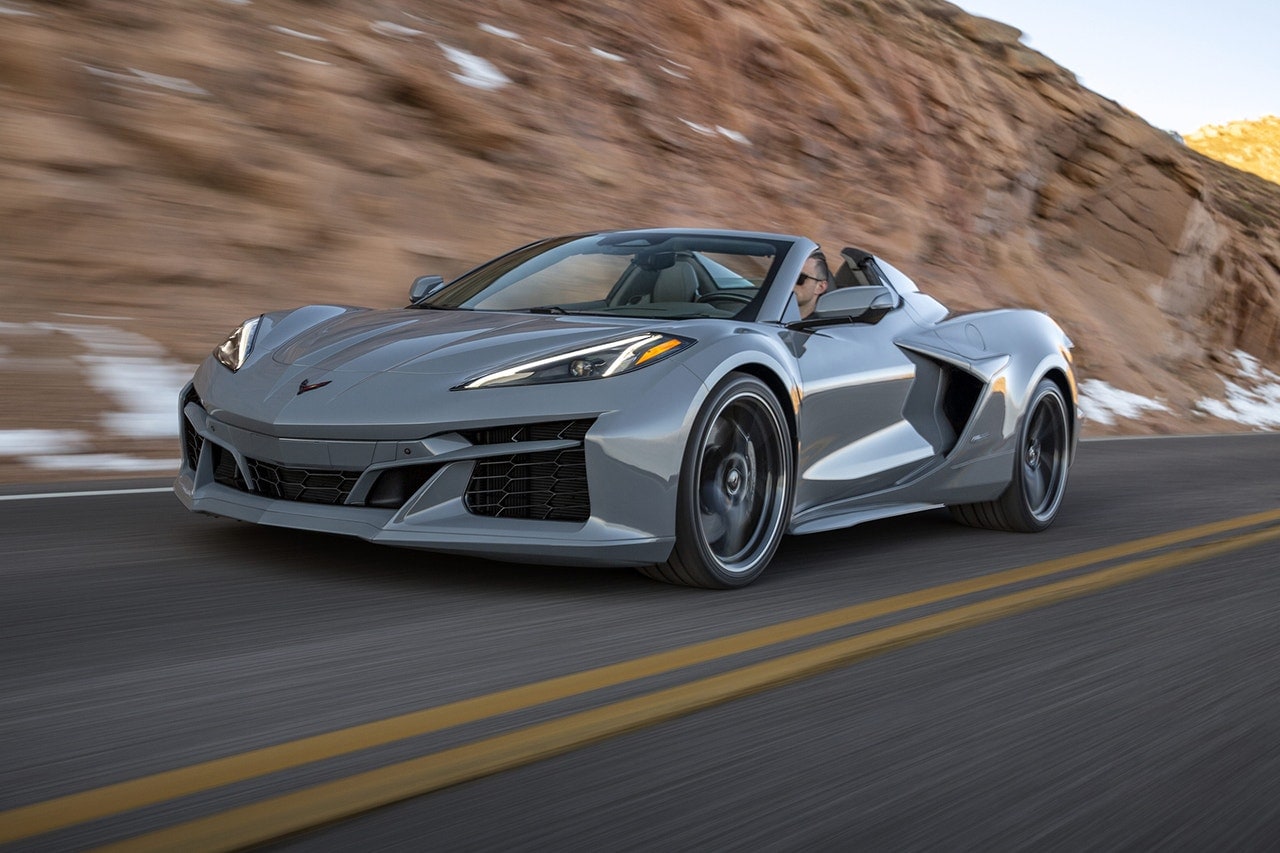
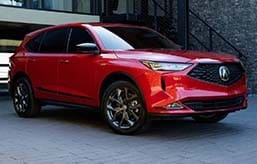
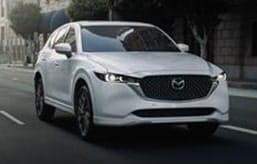
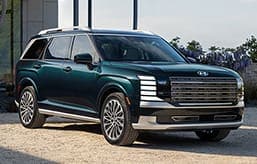
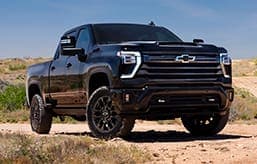
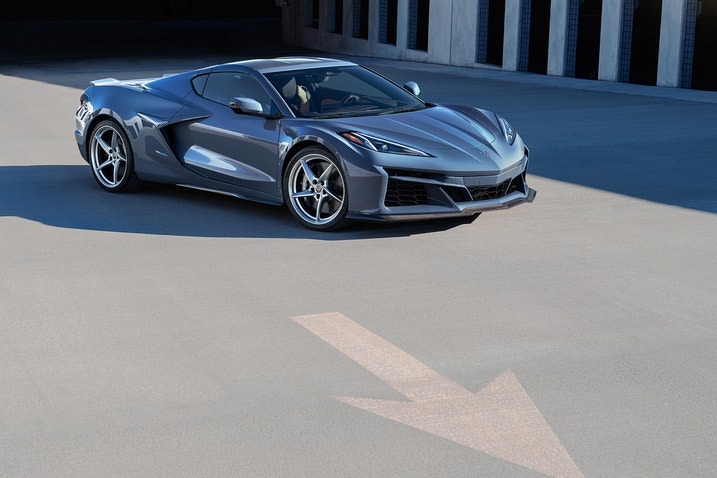
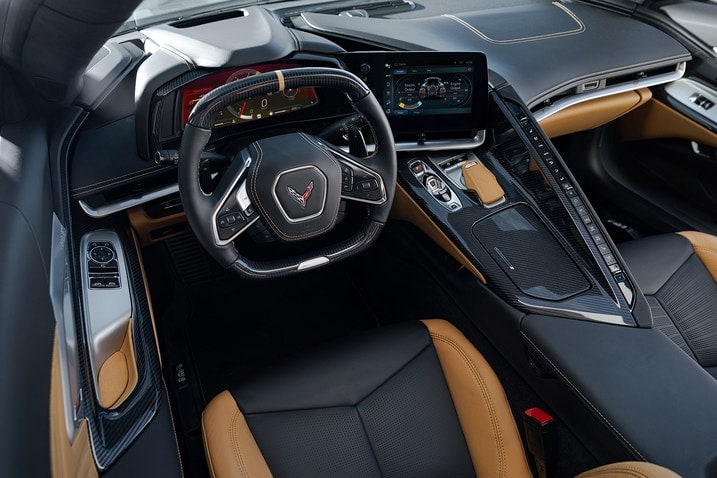
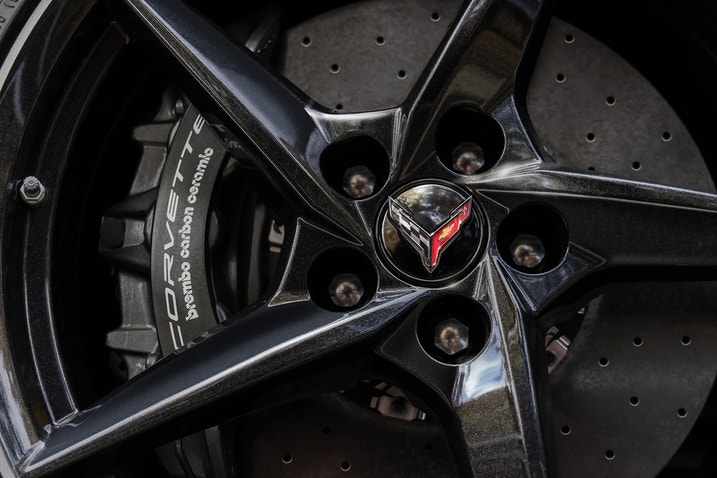
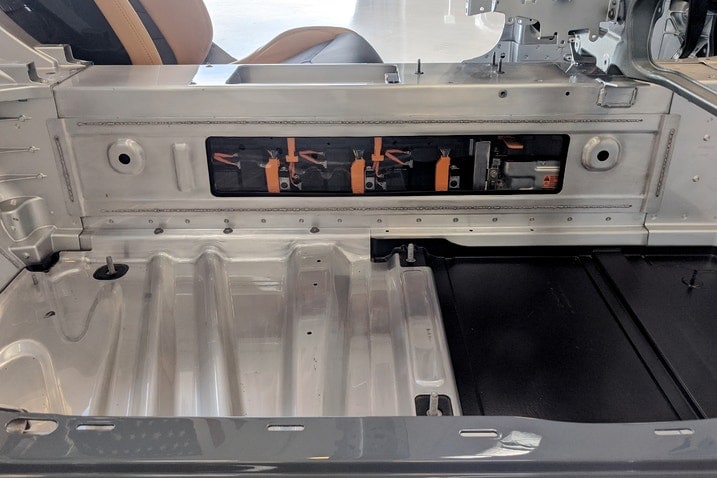
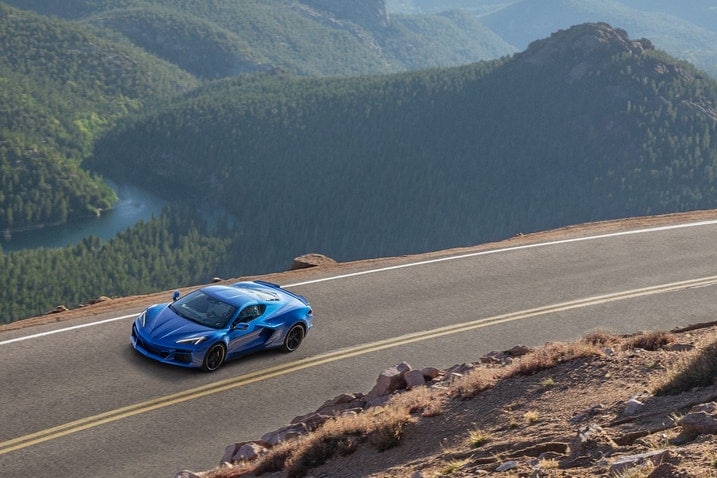
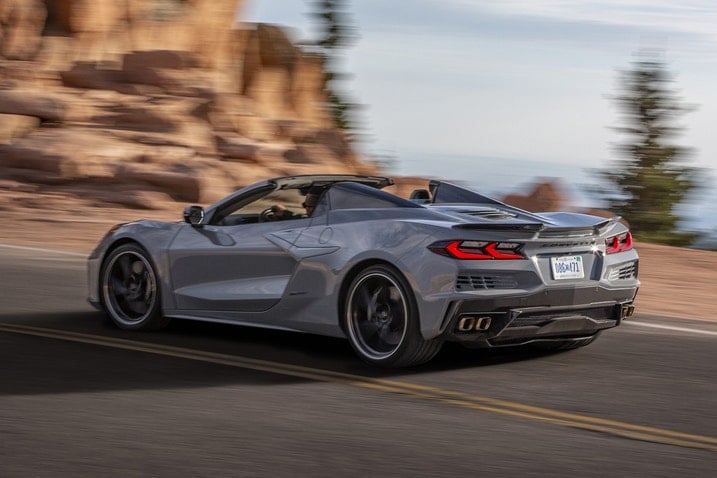
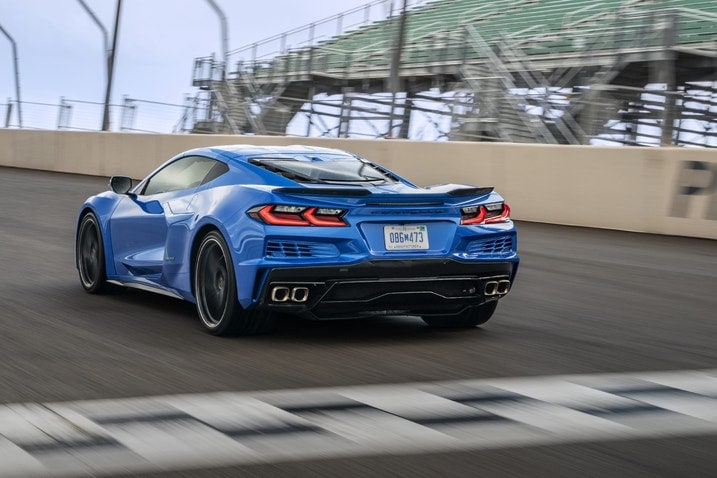
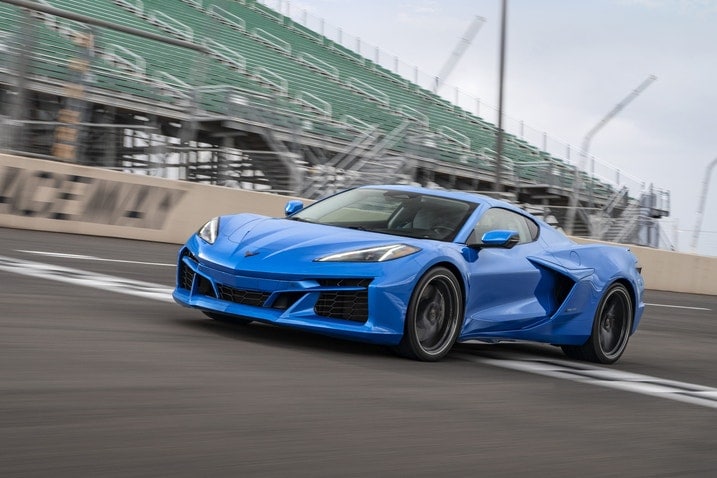
 by
by